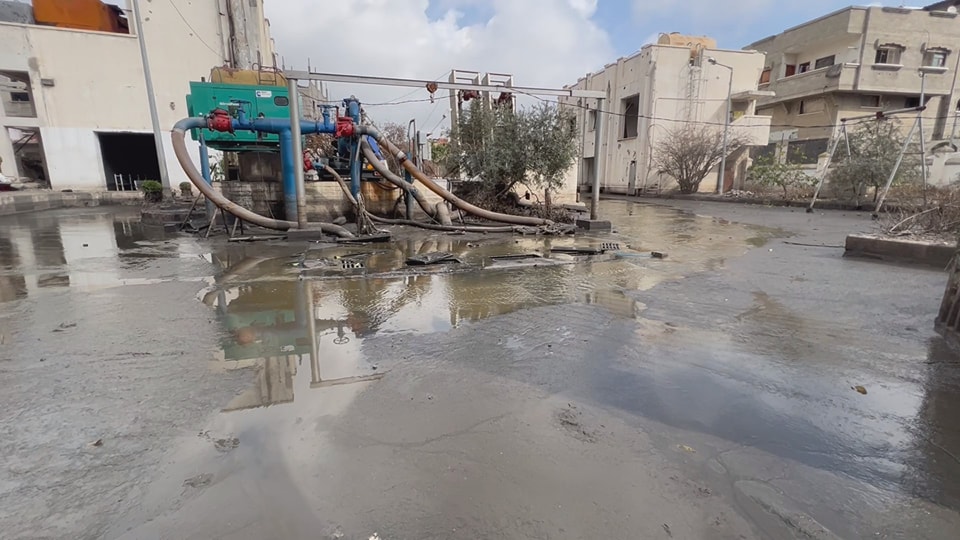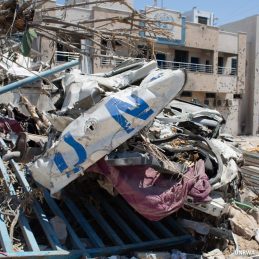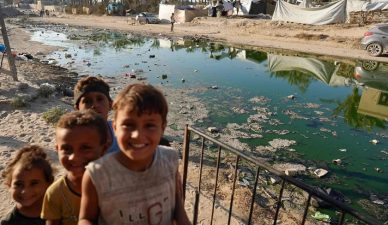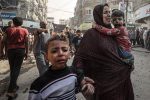GAZA, (PIC)
All aspects of life in the Gaza Strip have turned into memories, as the brutal Israeli aggression left no means of livelihood untouched, so that no Palestinian would have a chance to live on this land. No one is spared from the bombing and direct killing, until they find another source of slow death, such as hunger, disease, pollution, and other consequences left by the Israeli brutality in the war supported by the West to eliminate the remnants of Palestinian resilience in Gaza.
Multiple warnings from local and international organizations and institutions have been issued regarding the continuation of these crimes, through which the Israeli occupation army deliberately hinders any Palestinian seeking the minimum conditions for life. Among these warnings is the ongoing fuel crisis and its significant and dangerous impact on providing basic humanitarian services to citizens.
This crisis affects all daily uses, from operating power generators, ambulance cars, and municipal vehicles, as well as the continuous need for the medical sector to operate vital devices necessary to save patients.
Israel did not suffice with cutting fuel supplies for electricity generation, but it went beyond that to destroy solar power stations, which serve as a supplementary factor for supplying environmental and vital facilities in the sector. The municipality of Gaza says that the occupation army has destroyed six solar power facilities that supply essential services and vital facilities in the city since the start of the aggression.
The municipality of Gaza pointed out that the solar power facilities destroyed by the occupation forces include several vital facilities, including solar power units in the rainwater collection pool in Sheikh Radwan neighborhood, solar power in the market of Al-Shati refugee camp, power for building number 3 in the main building, power for the lighting building, power for the treatment station in the Sheikh Ajleen area, and power for building number 4 in the main Gaza municipality headquarters.
Environmental crisis
With the disruption of municipal and civil service mechanisms, all services related to repairing and purifying the environment in the Gaza Strip have been halted. On the other hand, the occupation army has resorted to destroying sewage facilities, causing a serious health and environmental disaster due to the leakage of sewage water into the streets, the beach, and rainwater collection pools.
Since the start of the aggression, the Israeli occupation army has destroyed about 90 vehicles belonging to the Gaza municipality of various sizes, including waste collection and transportation vehicles, sewage treatment vehicles, heavy transport vehicles, maintenance workshops, excavators, administrative vehicles, emergency committee vehicles, and water tankers, resulting in the accumulation of about 70,000 tons of waste in the streets and near shelters.
The Gaza Municipality reported that the damages and destruction also included the destruction of approximately 30,000 meters of sewage networks and 5,000 meters of rainwater drainage networks, which threatens a health disaster due to the spread of diseases and infections resulting from this pollution.
In a deliberate act of environmental destruction, the occupation forces uprooted around 50,000 trees and bulldozed thousands of cultivated dunums of land. They also intentionally uprooted tree-lined streets, public parks, and farmers’ fields in various areas.
Thirst crisis
Since the beginning of the aggression, all cities in the Gaza Strip have suffered from the loss of water sources one after another due to the Israeli occupation’s targeting of them. The occupation army destroyed about 40 water wells and 9 water tanks of various sizes, as well as 42,000 linear meters of water networks with various diameters.
The occupation army’s cutting off of water sources and the depletion of necessary fuel for operating the wells has caused a major water crisis and a state of thirst in the city. This includes the Makorot pipeline, which supplies Gaza City with approximately 25% of its water needs from within, as well as the wells that were destroyed, accounting for about 60% of the total number of wells that were functioning in the city before the aggression. The city had around 80 wells before the aggression. Additionally, the desalination plant in the northern part of the city, which supplies about 10% of its daily needs, has been destroyed.
Destruction of heritage
Since the first day of the aggression, the Israeli occupation forces deliberately targeted buildings, archaeological and historical sites in an attempt to erase Palestinian memory and eliminate its rich history.
The occupation army destroyed the Al-Omari Grand Mosque by directly shelling it. It is one of the oldest and largest mosques in Gaza and Palestine, located in the heart of the old town and considered one of the most important landmarks of Gaza City throughout history.
Other targeted archaeological sites include the old Gaza Municipality building, the historic Gaza Municipality Presidency building, the St. Porphyrius Church, the historic Pasha Palace, the Al-Sakka family house in the Shuja’iya neighborhood, the Bin Othman Mosque in the Shuja’iya neighborhood, and ancient buildings in the city.
The Israeli destruction spree also extended to Palestinian heritage in the Al-Zawiya market in the old town, which is one of the most important and oldest markets in the city. It represents a symbolic and moral value for the city and its commercial and economic activities.
Neighborhoods and the dead
The crimes committed by the Israeli occupation army since the start of its aggression on October 7th have extended beyond the neighborhoods inhabited by the people of Gaza to reach the deceased within its depths. The occupation troops deliberately targeted numerous cemeteries in all areas of the Gaza Strip, excavating graves in violation of religious laws, international laws, and customs.
The occupation army committed its crime in various cemeteries in Gaza City, including the Bab Al-Bahr cemetery opposite Al-Baptist hospital, the Twinsi cemetery in the Shuja’iya neighborhood, the Al-Batesh cemetery in the Tuffah neighborhood, the Ben Marwan cemetery in the Daraj neighborhood, the Sheikh Radwan cemetery, and dozens of other public and private cemeteries.
The soldiers also excavated large parts of the cemeteries, dug up graves, ran over them with tanks, demolished their walls, and removed bodies from the graves as a result of indiscriminate excavation.















